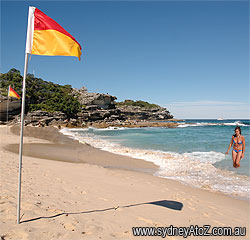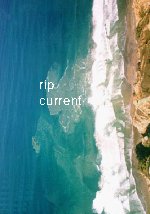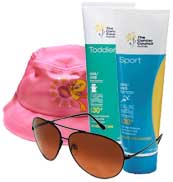| Sunrise: 06:22 | Sunset: 17:26 | GMT +10 | Today: Clear. |
| home | Bookmark this site! | site map | | Your browser did not load the style sheet and as a result the web page is not displaying correctly.
- Cause: You use a low speed connection or the Internet is slow at this time. Solution: Hit the Refresh Button of the browser or click here.
- Cause: Your browser is not complying with the cascading style sheet used. Solution: Update your browser. We recommend Internet Explorer (IE) or FireFox.
You are here: Sydney A to Z (home)
» Beach Safety
Beach Safety
recommended by SLSA ...
SLSA stands for Surf Life Saving Australia. They put together a list with the following tips:
©2006 Gabriel Ditu
- Always swim or surf at places patrolled by surf lifesavers or lifeguards.
- Swim between the red and yellow flags. They mark the safest area to swim.
- Always swim under supervision or with a friend.
- Read and obey the signs.
- Don't swim directly after a meal.
- Don't swim under the influence of drugs or alcohol.
- If you are unsure of surf conditions, ask a lifesaver or lifeguard.
- Never run and dive in the water. Even if you have checked before, conditions can change.
- If you get into trouble in the water, don't panic. Raise your arm for help, float and wait for assistance.
- Float with a current or undertow. Stay calm. Don't try to swim against it. Signal for help and wait for assistance.
the rip...

web.mit.edu - rip current
The following are signs from which you can identify a rip:
- if the sea is rough and white the rip is where there's a channel of calmer looking water.
- if the sea is calm, the rip is where there's a channel of rippled water.
- darker colour, indicating deeper water
- murky brown water caused by sand stirred up off the bottom
- waves breaking further out to sea on both sides of the rip
- debris floating out to sea
Note: The lifeguards are usually more experienced than you, therefore try to swim between the flags. That area is the safest.
UV protection...

- apply on your skin an SPF 30+ sunscreen lotion
- use sun glasses with high UV protection rating
- wear a hat
- cover your body clothes as much as possible
- go to the beach in the morning or in the afternoon when the sun is not as strong
related links...
Surf Life Saving AustraliaThe Cancer Council Australia
The Australian Health Institute
20 April
1770 - Captain Cook's Endeavour voyage first sights the continent of Australia.
1937 - The first regular airmail service between Australia and the United States begins operation.
1937 - The first regular airmail service between Australia and the United States begins operation.
Australian slang
- gutful of piss drunk
- chocka full up
- pav Pavlova
- grinning like a shot fox very happy
- coo-ee exclamation used to attract attention when lost in the bush
- lollies sweets
- sandgroper West Australian
- fossicker gold miner
- flog to sell / steal
Online Maps
Sydney A to Z banners
